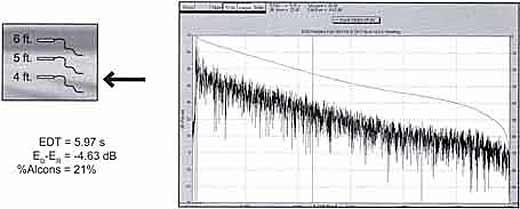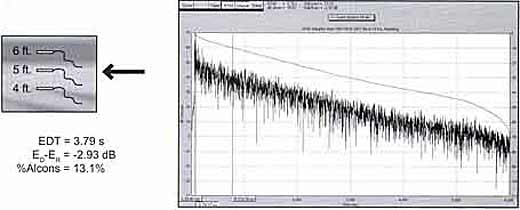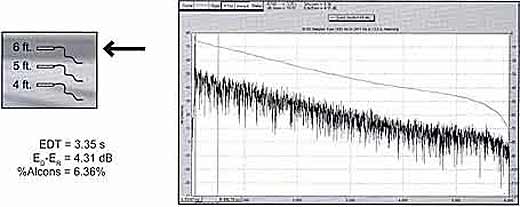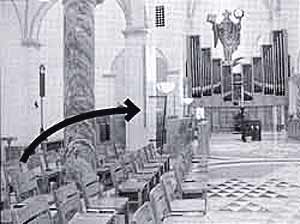A small section of rural southern Indiana has a dense Roman Catholic population of predominantly German descent.
A number of traditional church buildings dot the landscape – most of which are very old and very reverberant. Buddy Ward is the local sound expert (a long time TEF user). He also owns and operates a frill-line music store in the area.
Buddy never misses an opportunity to demonstrate to the locals that speech intelligibility can exist in a structure designed for traditional music and worship. He has become somewhat of a “line array evangelist” who can boast of some truly remarkable results in these traditional structures.
The space we were working in has an RT in excess of 6 seconds at 2 kHz. The new sound system consists of four Intellivox line arrays placed at strategic locations throughout the room.
While the ears are a wonderful tool for aiming such systems, they grow tired with use and cannot document the performance of the system.

We augmented the listening process with %ALcons measurements performed on a Goldline TEF2O. The measurements clearly showed when we were in the main lobe of the line array (Figures 2-4), as evidenced by improved %Alcons, a shorter Early-Decay Time (EDT) and improved direct-to-reverberant ratio (ED-ER).
This was indeed a “text book” case that supported what we feel we understand about speech intelligibility.



While I always enjoy working with Buddy on a project, I must confess that I had an alterior motive for working on this one.
The monks have agreed to let us use the facility on occasion as an acoustics lab. We have already compiled measurements and recordings of various types of loudspeakers made in space, and anticipate many meaningful articles and seminar demonstrations from the data.















